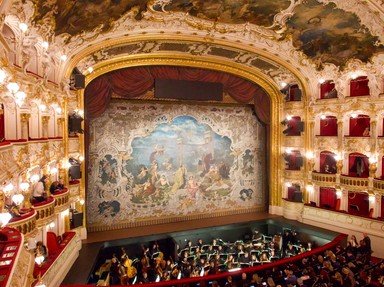Quiz Answer Key and Fun Facts
1. What was the original name of the 'Old Vic' Theatre, which would become the first home of the National Theatre?
2. After some years of intermittent Shakespearean productions, The Old Vic Company was established in 1929 to present a regular program of Shakespeare. Which renowned Shakespearean actor led this Company?
3. The Old Vic was badly damaged during the London Blitz. Where was the Old Vic Company based during the war years?
4. In 1944, the Old Vic Company returned to London, and performed at the New Theatre, until the Old Vic could be rebuilt. Who emerged as one of the major stars of the Company at this time?
5. In what year was the Old Vic Company dissolved and the new National Theatre Company formed, based at the Old Vic Theatre?
6. What was the production with which the new National Theatre Company opened their first season?
7. Who took over from Laurence Olivier as Artistic Director, and was responsible for transferring the Company to their new home near Waterloo Bridge on the South Bank of the Thames?
8. When did the Company finally move from the Old Vic Theatre to its new home on the South Bank?
9. What was the first production at the new South Bank location of the National Theatre?
10. How many theatres are there within the South Bank Complex of the National Theatre?
11. What is special about the stage layout of the Olivier Theatre?
12. Intended as a gathering place beyond the theatres, what other unique facilities are offered to the public within the South Bank site?
13. The architecture for the National Theatre's new complex caused highly divided opinion. Which strong critic of modern architecture in 1988 described the buildings as " ... a clever way of building a nuclear power station in London, without anyone objecting"?
14. Since 1988, the National has been permitted to call itself an even more auspicious name. What is that name?
15. Along with the Hayward Gallery and Queen Elizabeth Hall, the National Theatre has the dubious honor of being simultaneously on the lists of the Ten Best and Ten Worst buildings in London. Of whom is the marvellous statue in Hamlet role, unveiled outside the National in September of 2007?
Source: Author
Englizzie
This quiz was reviewed by FunTrivia editor
agony before going online.
Any errors found in FunTrivia content are routinely corrected through our feedback system.

